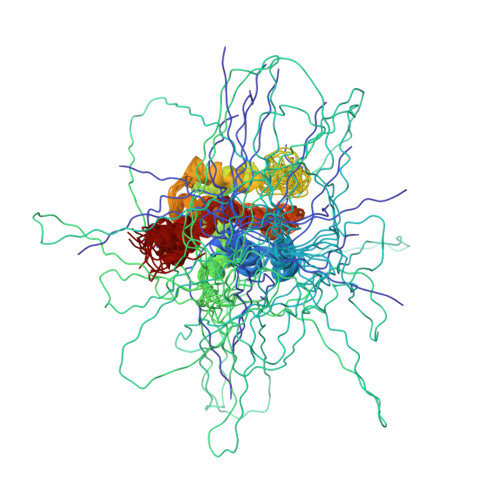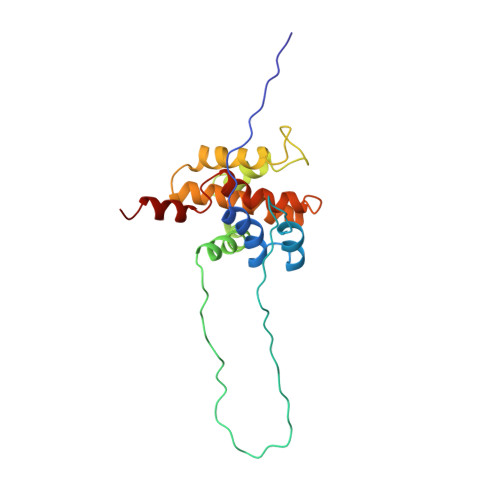Solution structure of the proapoptotic molecule BID: a structural basis for apoptotic agonists and antagonists.
McDonnell, J.M., Fushman, D., Milliman, C.L., Korsmeyer, S.J., Cowburn, D.(1999) Cell 96: 625-634
- PubMed: 10089878
- DOI: https://doi.org/10.1016/s0092-8674(00)80573-5
- Primary Citation of Related Structures:
1DDB - PubMed Abstract:
Members of the BCL2 family of proteins are key regulators of programmed cell death, acting either as apoptotic agonists or antagonists. Here we describe the solution structure of BID, presenting the structure of a proapoptotic BCL2 family member. An analysis of sequence/structure of BCL2 family members allows us to define a structural superfamily, which has implications for general mechanisms for regulating proapoptotic activity. It appears two criteria must be met for proapoptotic function within the BCL2 family: targeting of molecules to intracellular membranes, and exposure of the BH3 death domain. BID's activity is regulated by a Caspase 8-mediated cleavage event, exposing the BH3 domain and significantly changing the surface charge and hydrophobicity, resulting in a change of cellular localization.
Organizational Affiliation:
Rockefeller University, New York, New York 10021, USA.
















